Lightning Network: What It Is And How It Works
The Lightning Network is a network of payment channels on top of Bitcoin, offering a promising solution to address the scalability constraints of the Bitcoin on-chain network. This guide will delve into its key aspects.
Years ago, the blockchain trilemma evidenced the trade-off between 3 critical aspects of bitcoin technology: Security, scalability, and decentralisation. Bitcoin base layer prioritise decentralisation and security, but this poses challenges to scalability.
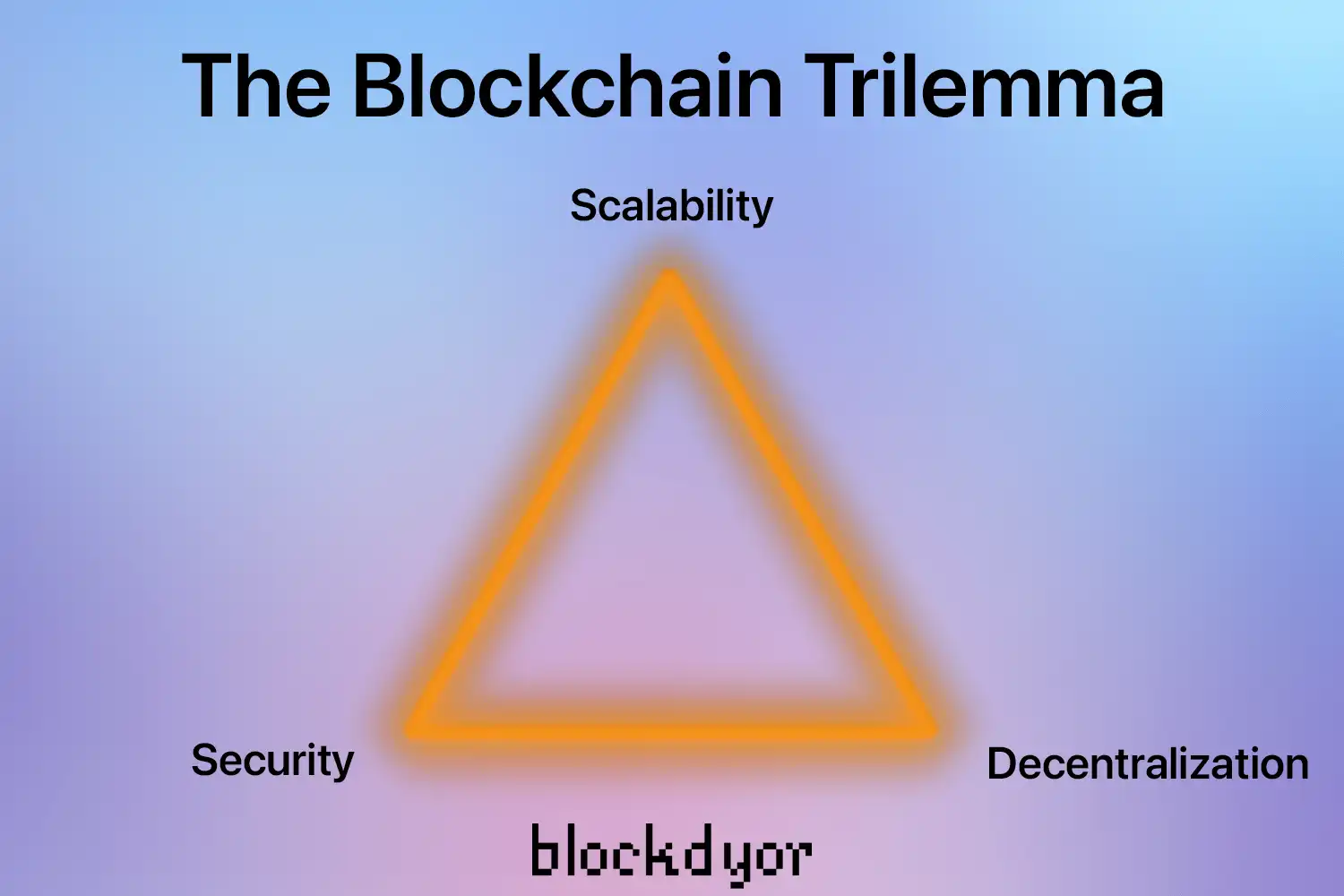
While it is generally accepted that a public blockchain can only truly achieve 2 of the 3 benefits at any given time, the easiest solution that doesn't need any fork in Bitcoin is to develop and use 2nd layers on top of Bitcoin. And for now, the most widely used and well known solution is the Lightning Network.
What Is The Lightning Network?
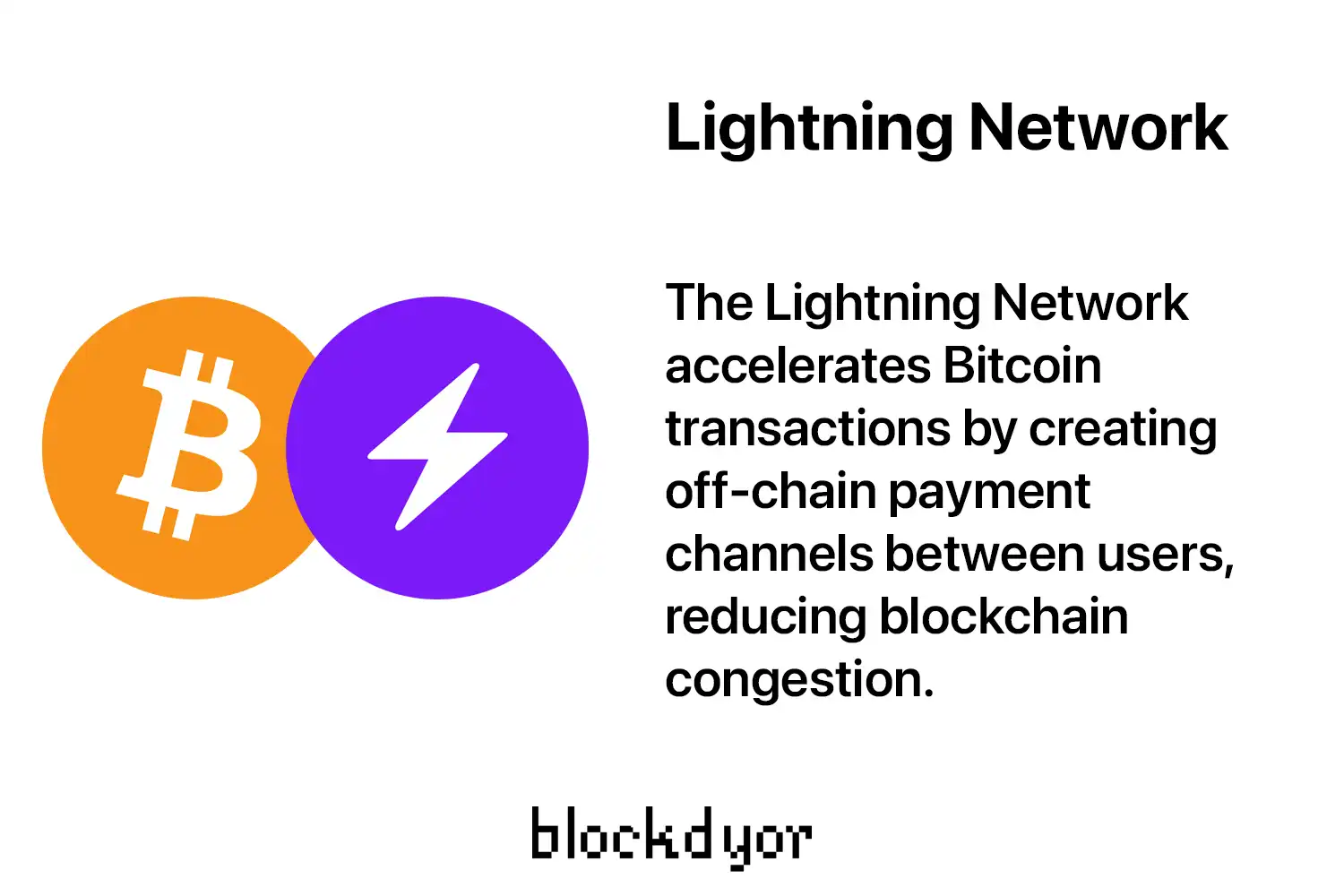
The Lightning Network (LN) is a revolutionary solution built on top of the Bitcoin blockchain. It operates as a second layer peer-to-peer network that enables off-chain Bitcoin transactions. This means that instead of every transaction being recorded on the Bitcoin blockchain, the Lightning Network allows users to make numerous transactions without burdening the main blockchain with each one.
One of the key advantages of the Lightning Network is its ability to provide secure, cheap, and fast transactions, even for micro-payments. This is achieved by establishing payment channels between users. These channels allow users to conduct transactions off-chain, keeping the blockchain lightweight and efficient.
The concept of payment channels was first introduced by Satoshi Nakamoto, the mysterious creator(s) of Bitcoin. However, it was further developed and implemented into the Lightning Network by Joseph Poon and Thaddeus Dryja in their seminal 2015 paper, "The Bitcoin Lightning Network: Scalable Off-Chain Instant Payments."
The Lightning Network operates as a routed network of payment channels. When a user initiates a payment, it hops across a path of payment channels from the sender to the recipient. This process ensures that transactions can be completed quickly and efficiently, regardless of the distance between the sender and the recipient.
In 2017, a "test" Lightning Network was launched on the internet, allowing different groups to build compatible implementations and establish interoperability standards. By 2018, the Lightning Network was fully operational, and payments began to flow seamlessly across the network, marking a significant milestone in the development of Bitcoin's scalability and usability.
How The Lightning Network Works?
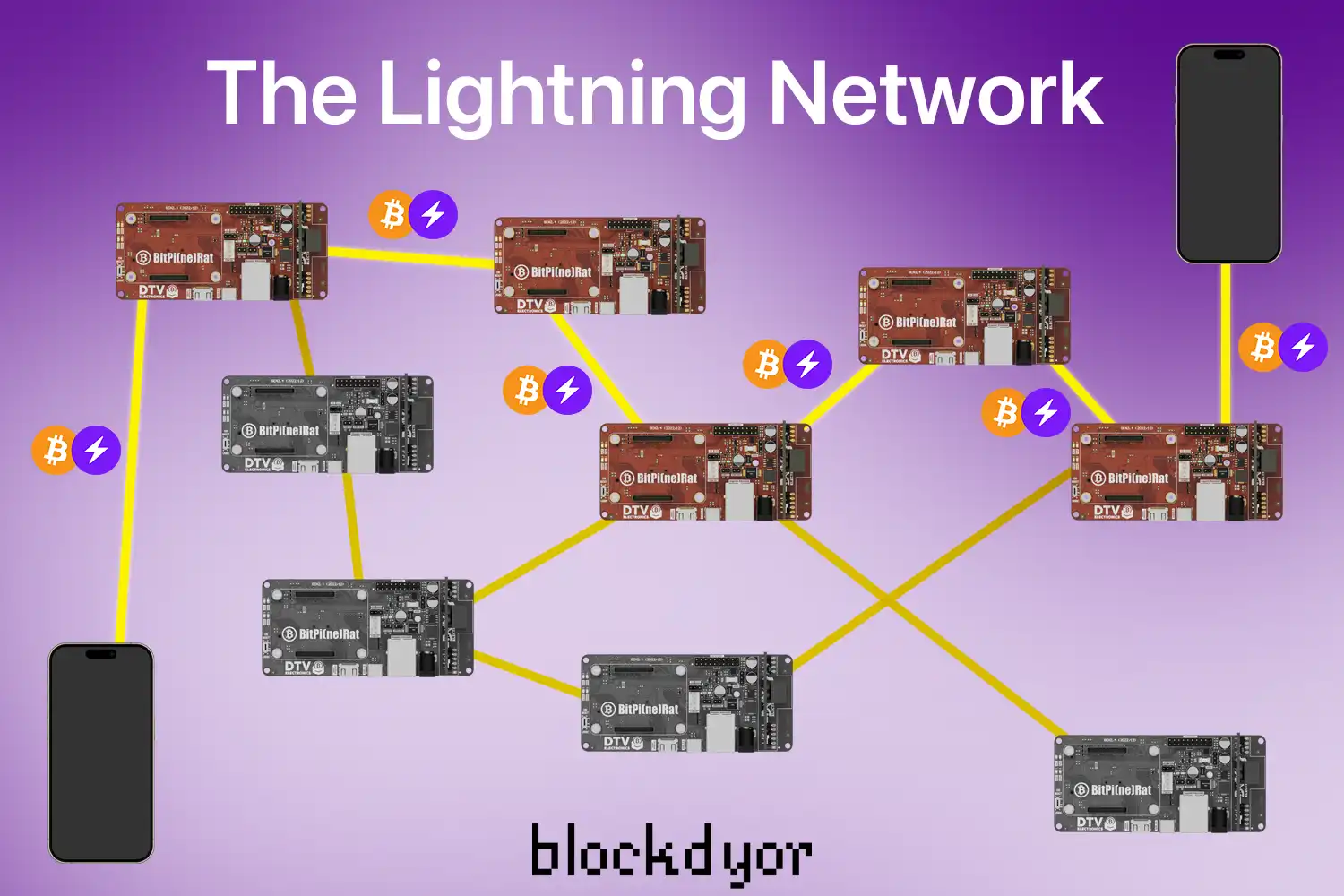
The Lightning Network operates as a peer-to-peer network of payment channels, implemented through smart contracts on the Bitcoin blockchain, along with a communication protocol that governs how these contracts are established and executed. Here, we'll have a brief look at the fundamental components of the Lightning Network, to provide clarity on its inner workings.
Payment Channels
Imagine you and your friend want to exchange Bitcoin frequently, but you don't want to deal with the slow confirmations and fees of the main Bitcoin network. So, you set up a payment channel, like a "secret piggy bank" that only you two can access. This channel has limits based on how quickly you can exchange data and the amount of Bitcoin you initially put in.
Liquidity
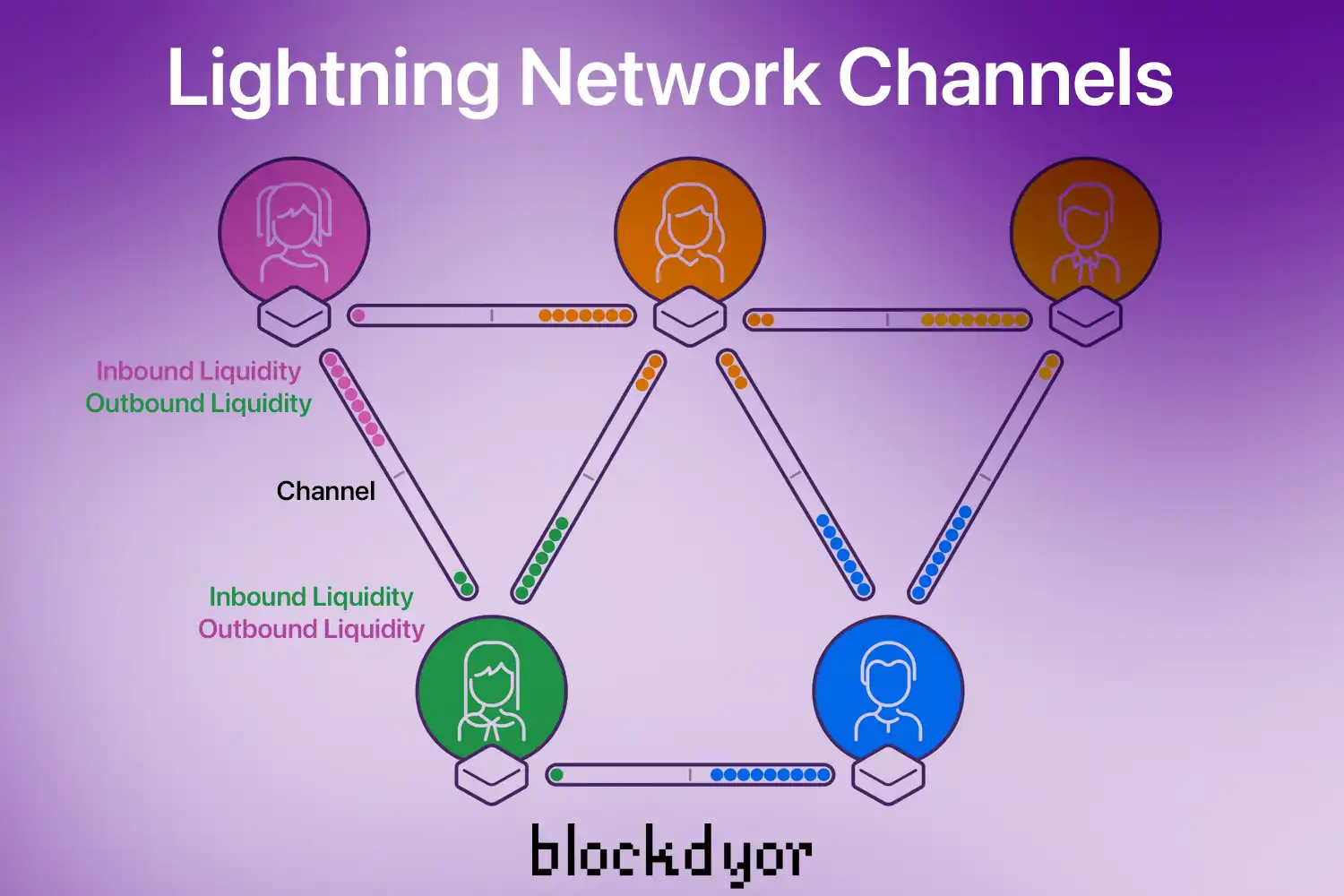
In the Lightning Network, liquidity is essential. It represents how easily you can send or receive Bitcoin, similar to having money in your wallet for transactions. Your liquidity status is divided into inbound and outbound. Inbound liquidity refers to what you can receive, while outbound is what you can send. When you receive Bitcoin, your inbound liquidity increases but outbound decreases, and vice versa when you send Bitcoin.
Multisignature Address
To start the channel, you create a 2-of-2 multisignature address, which means both of you need to sign off on any transactions. It's like locking your Bitcoin in a box with two keys, ensuring mutual agreement before funds move.
Funding Transaction
You kick off the channel by funding it with Bitcoin from your wallet. This sets up a shared wallet controlled by both of you. This transaction is recorded on the public Bitcoin blockchain but doesn't reveal that it's for a Lightning channel. The amount you deposit sets the maximum value that can flow through the channel.
Commitment Transaction
As you and your friend exchange Bitcoin within the channel, you create commitment transactions to reflect the current balance. These transactions ensure both of you can get your fair share of the funds without trusting each other completely. Each time funds move, new commitment transactions are created and signed, maintaining fairness and security.
Cheating Prevention
To prevent cheating, a penalty mechanism is implemented. If one party tries to cheat by broadcasting an old transaction, the other party can claim the balance of the cheater. This strong penalty discourages cheating and keeps the system secure.
Closing the Channel
While it's best to keep the channel open for efficiency, there are times when closing it is necessary. This could be for security reasons, if your friend becomes unresponsive, or due to a protocol breach. There are three methods to close the channel: mutual close, force close, and protocol breach, each suited to different circumstances.
How To Use The Lightning Network
In this section, we'll explore the process of downloading, using, and initiating transactions with a Lightning Wallet. Due to the intricate nature of the Lightning Network, I'll opt for the simplest non-custodial Lightning Wallet currently available.
This choice allows us to delve into some underlying complexities and introduce the inner workings of an advanced wallet. Your preferred wallet may prioritize ease of use, accepting certain control and privacy trade-offs. Alternatively, you might lean towards a more advanced setup, running your own Lightning and Bitcoin nodes as part of your wallet solution.
Downloading And Installing A Lightning Wallet
To begin using the Lightning Network, the first step is to find a suitable Lightning Wallet. There are several options available, such as Phoenix Wallet and the Breez wallet. However, for the purpose of this guide, we will focus on utilizing a simple yet efficient wallet known as AQUA Wallet. This wallet offers a streamlined Lightning Experience, making it ideal for beginners.
AQUA Wallet simplifies the Lightning Experience by seamlessly managing Bitcoin transactions. Incoming Bitcoin on the Lightning Network is automatically converted to Liquid Bitcoin (L-BTC) through an atomic swap process. Similarly, when you need to send Bitcoin on the Lightning Network, AQUA Wallet facilitates the swap from Bitcoin Liquid back to Lightning Bitcoin, or even to normal Bitcoin on the main chain if desired. This eliminates the hassle of manually opening or closing channels.
AQUA Wallet is available for download on both the Google Play Store and the App Store. To ensure security and avoid potential scams or fake wallets, it is recommended to download the wallet directly from the official website, aquawallet.io. From there, you can access the download section, which provides links to the Google Play Store, Apple Store, or even the .APK file for Android devices.
If you want to dig deeper into the AQUA Wallet, have a look at our full review down below.
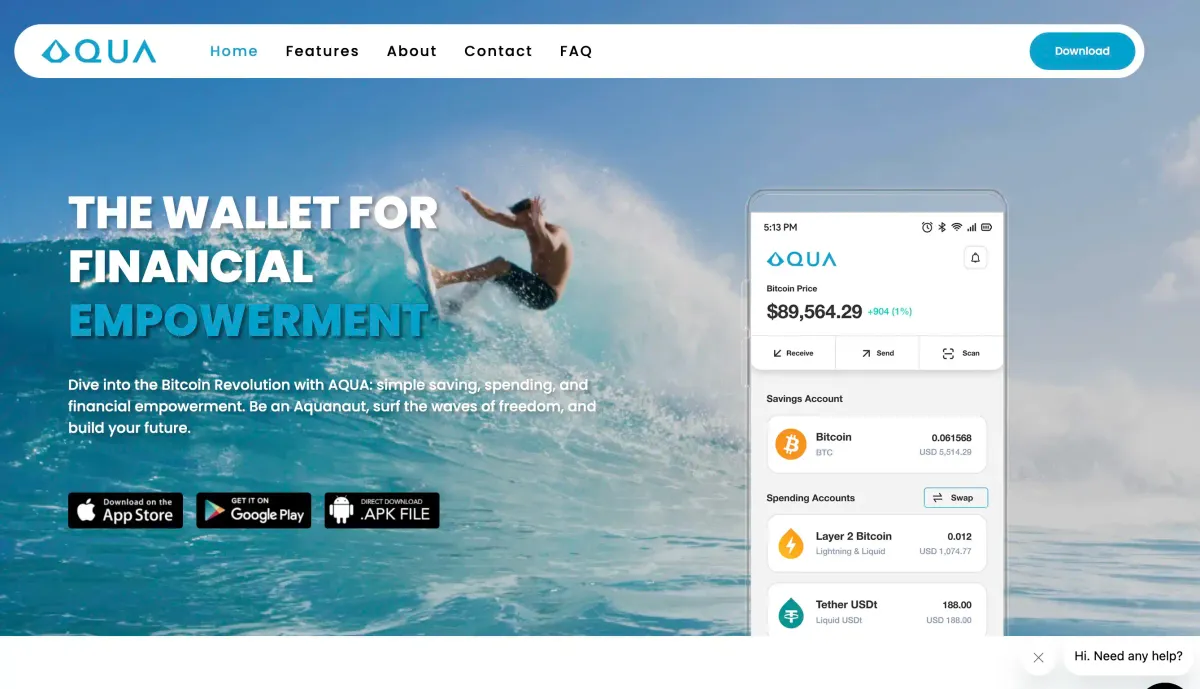
Creating A New Wallet

When you first open the AQUA Wallet app, you'll need to accept the Terms of Service, and decide whether to "Create a New Wallet" or "Import an Existing Wallet." In this guide, we'll focus on creating a new wallet for now.
Loading Some Bitcoin Into The Wallet
Now that your AQUA Wallet is downloaded, set up, and backed up securely, it's time to acquire Bitcoin and load it into your wallet. There are several popular methods for purchasing Bitcoin:
- Exchange your local currency (e.g., USD or EUR) for Bitcoin on a cryptocurrency exchange.
- Purchase Bitcoin from a friend you meet at a meetup, exchanging cash.
- Locate a Bitcoin ATM in your area, where you can exchange cash for Bitcoin.
- Offer your skills or products for sale and accept payment in Bitcoin.
- Request your employer or clients to pay you in Bitcoin.
Each of these methods varies in complexity, and many involve fees based on market prices. Additionally, some methods may require providing identification documents to comply with KYC (Know Your Customer) and AML (Anti-Money Laundering) regulations.
To avoid many passages, it's advisable to choose for example exchanges that support lightning, so you can already get started by receiving lightning directly from the wallet.
Below, you'll find a guide on purchasing Bitcoin on Kraken, a regulated exchange that seamlessly supports Bitcoin Lightning. From Kraken to AQUA, there's no hassle of opening or closing channels. Simply create an invoice on AQUA for the desired amount of Bitcoin, input in Kraken, and you'll receive your bitcoins instantly. Follow the link below for a step-by-step guide on how to proceed.
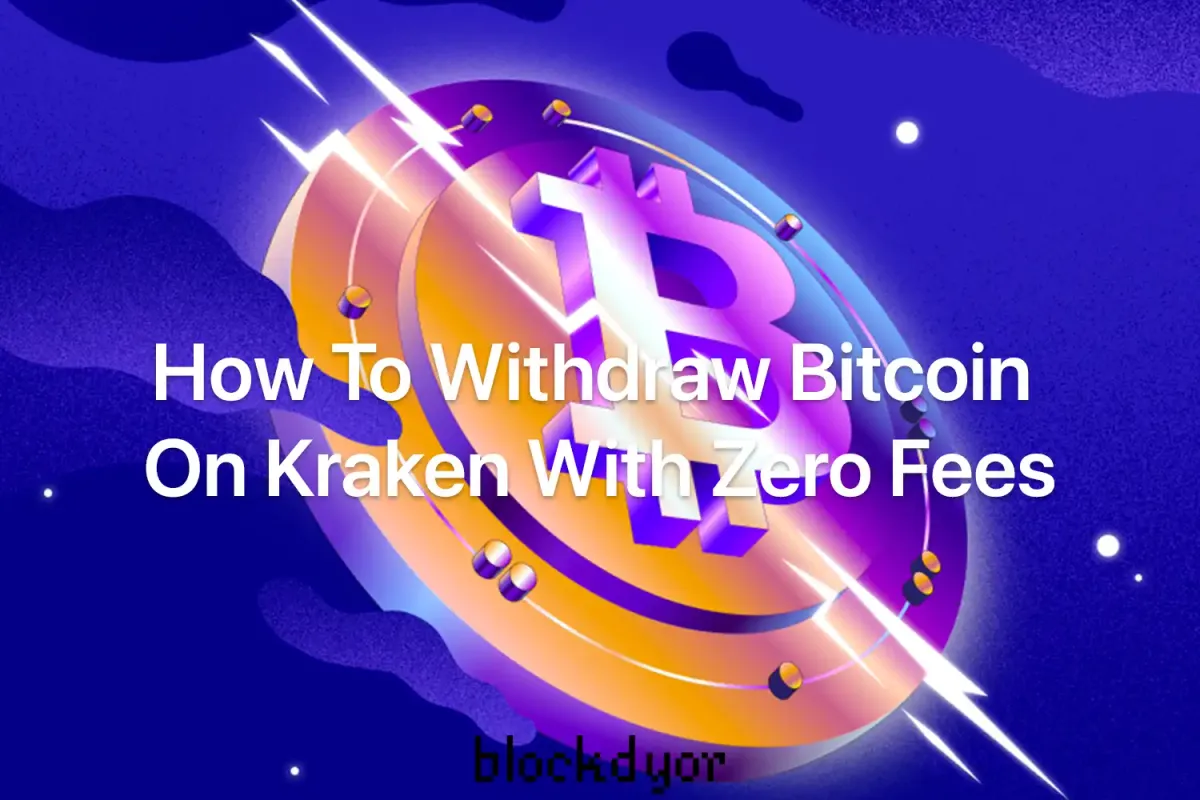
Pros and Cons of the Lightning Network

| Pros | Cons |
|---|---|
| ✅ Faster transactions | ❌ Limited Adoption |
| ✅ Lower fees | ❌ Complex |
| ✅ Increased scalability | ❌ Lower security compared to main chain |
| ✅ Trustless and Decentralized |
The Lightning Network offers several advantages for conducting transactions on the Bitcoin network, such as:
- Faster transactions: Lightning Network enables near-instant transactions, providing users with quicker payment settlement compared to traditional Bitcoin transactions, which can sometimes take minutes or even hours to confirm on the blockchain.
- Lower transaction fees: By conducting transactions off-chain through payment channels, Lightning Network significantly reduces transaction fees, making microtransactions economically feasible and cost-effective.
- Increased scalability: Lightning Network addresses Bitcoin's scalability issues by enabling a high volume of transactions to be processed off-chain, reducing the blockchain footprint.
- Greater flexibility: Lightning Network offers users greater flexibility in managing their funds and conducting transactions, allowing for peer-to-peer payments without relying on third-party intermediaries and offering more privacy and control over one's financial transactions.
- Trustless and Decentralized nature: In contrast to sidechains such as the Liquid Network, Lightning presents a higher degree of decentralization, peer-to-peer interaction, and a trustless model. Bitcoin on the Lightning Network it's still bitcoin and doesn't need swapping with liquid assets like L-BTC. Additionally, individuals have the opportunity to operate their own nodes using open-source implementations, further enhancing decentralization.
Despite these benefits, the Lightning Network also faces challenges and potential drawbacks, including:
- Limited adoption: While adoption of the Lightning Network is growing, it is still in its early stages, and widespread adoption by users and businesses may take time, hindering its overall impact on the Bitcoin ecosystem.
- Complexity: Setting up and managing Lightning Network channels can be complex, requiring users to have a certain level of technical expertise and understanding of the underlying technology, which may deter some users from adopting the Lightning Network.
- Security risks: Lightning Network introduces new security considerations, such as the risk of channel breaches and loss of funds if proper security measures are not followed. Additionally, the reliance on smart contracts and off-chain transactions introduces potential vulnerabilities that could be exploited by malicious actors.
Before fully embracing the Lightning Network, users should carefully consider these challenges and risks and weigh them against the potential benefits it offers for conducting fast, low-cost, and scalable Bitcoin transactions.
Bottom Line
In conclusion, while the Lightning Network presents a complex landscape, especially for node-runners and non-custodial wallets prioritizing security, emerging solutions like the AQUA Wallet offer simplified access. This trend toward user-friendly interfaces enhances the potential for global Lightning Network adoption.
As we navigate this evolving ecosystem, prioritizing security, accessibility, and innovation will be key to realizing the transformative potential of the Lightning Network technology in revolutionizing Bitcoin transactions worldwide.


